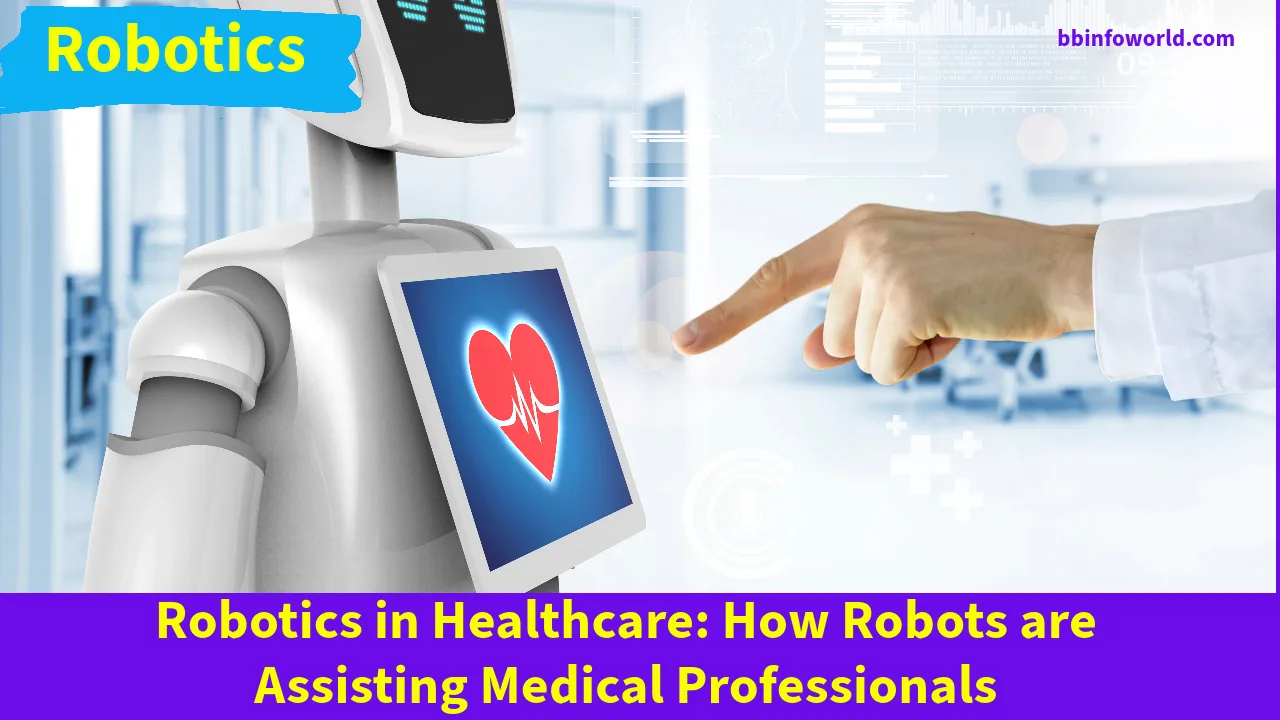
Robotics in Healthcare: How Robots are Assisting Medical Professionals
In recent years, the integration of robotics in the healthcare sector has led to significant advancements in medical procedures, patient care, and overall healthcare delivery. Robots have proven to be invaluable tools that complement the skills and expertise of medical professionals, enhancing the quality and precision of care while also reducing the burden on healthcare workers. This article explores the multifaceted role of robotics in healthcare and how robots are assisting medical professionals in various ways.
1. Surgical Precision and Minimally Invasive Procedures:
Robotic-assisted surgery has revolutionized the field of surgery. Robots equipped with advanced sensors and precise instruments assist surgeons in performing intricate procedures with enhanced precision. The da Vinci Surgical System, for instance, allows surgeons to perform minimally invasive surgeries with greater accuracy, leading to smaller incisions, reduced pain, shorter recovery times, and improved patient outcomes.
2. Telemedicine and Remote Consultations:
Robots are playing a pivotal role in telemedicine, enabling remote consultations between patients and healthcare professionals. Telemedicine robots equipped with cameras and screens facilitate virtual doctor-patient interactions, allowing medical professionals to diagnose, prescribe treatments, and provide medical advice from a distance. This is especially crucial in situations where patients are unable to physically visit a medical facility.
3. Assisting in Rehabilitation and Physical Therapy:
Robots are being used to assist in the rehabilitation of patients recovering from injuries or surgeries. Robotic exoskeletons and devices help patients regain mobility and strength by providing targeted physical therapy. These devices can adapt to the patient’s progress and adjust the level of assistance accordingly, enabling personalized rehabilitation plans.
4. Drug Administration and Dispensing:
Robots are also being utilized for accurate drug administration and dispensing. Automated medication dispensers ensure that patients receive the right dosage of medication at the right time, reducing the risk of errors and improving medication adherence. Additionally, robots can assist pharmacists in preparing and packaging medications with precision.
5. Handling Hazardous and Repetitive Tasks:
Healthcare workers often face tasks that are hazardous, monotonous, or physically demanding. Robots can be deployed to handle these tasks, thereby minimizing the risk of exposure to infectious diseases, reducing strain on healthcare professionals, and freeing up their time for more complex and critical responsibilities.
6. Data Collection and Analysis:
Robots equipped with sensors and cameras can collect and analyze patient data, providing real-time information to medical professionals. This data can be used to monitor vital signs, track patient progress, and alert medical staff to any deviations from normal parameters. Such insights enable timely interventions and more informed decision-making.
7. Enhancing Training and Education:
Medical students and professionals can benefit from robotic simulators that replicate surgical procedures and medical scenarios. These simulators provide a risk-free environment for training, allowing practitioners to hone their skills, practice new techniques, and refine their expertise before performing procedures on actual patients.
8. Patient Assistance and Companion Robots:
Robots are being developed to provide companionship and assistance to patients, particularly in healthcare facilities or homes for the elderly. These robots can remind patients to take medications, engage in conversations, provide entertainment, and offer emotional support, contributing to the overall well-being of individuals in care settings.
In conclusion, the integration of robotics in healthcare represents a transformative shift in the medical field. Robots are not replacing medical professionals but rather enhancing their capabilities, improving patient outcomes, and streamlining healthcare processes. As technology continues to advance, the collaboration between robots and medical professionals is expected to bring about further innovations and improvements in patient care.



